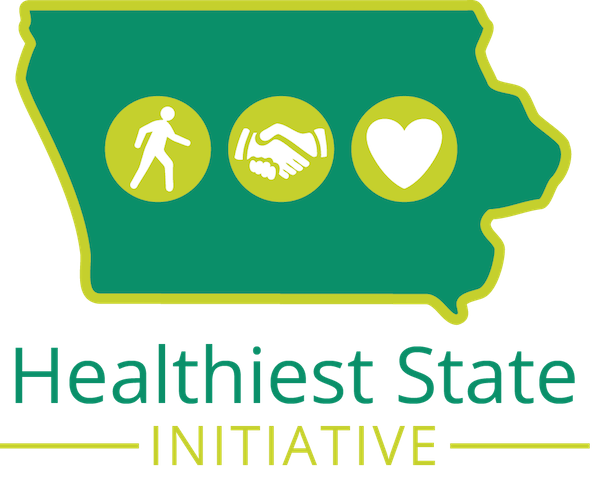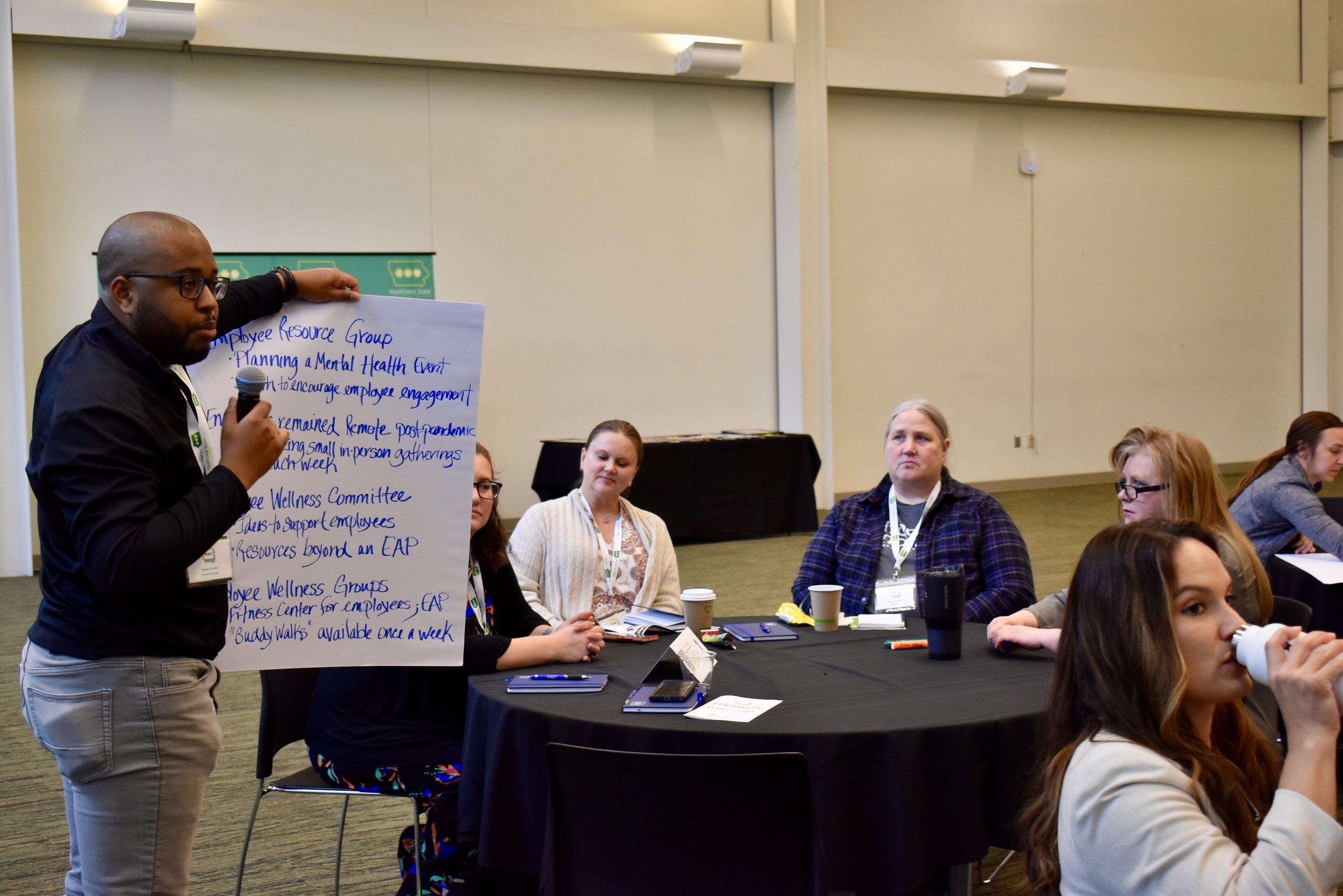Well-being Culture Trends Roundtable Findings
Workplace well-being is proving to be more than just a buzzworthy phrase in 2024, instead it is a trend that organizations must support if they want to hire and retain a successful workforce. At the 2024 Workplace Wellbeing Conference the Iowa Healthiest State Initiative hosted a roundtable exploration of well-being culture led by Jessica Sheets, Senior Strategist – Employee Experience Solutions with ITA Group, Inc. and Megan Hammes Owner/Founder of Hammes Homestead and Consulting. Attendees were split into groups, and offered insight into how their workplaces support three key pillars of workplace well-being: social connection, workplace flexibility, and engagement in company benefits and perks.
Social Connection
Social connection in the workplace encompasses multiple key concepts including well-being focused activities and employee recognition. A mindfulness moment to begin meetings, whether virtual or in-person, is a great tool to help employees refocus prior to the start of the meeting. Wellness emails have helped large organizations share well-being resources and raise awareness of company benefits to a wider audience. While other organizations have encouraged both personal and group wellness breaks through other ideas including:
Virtual wellness breaks
Employee wellness committees
Chat rooms and blogs to encourage social connection
Wellness Wednesdays
Group activities are a simple way to encourage social connection. Some ideas presented by those at the Workplace Wellbeing Conference are:
Volunteer opportunities
Walking meetings
Family activities outside of work
Family easter egg hunts
Food trucks
Outings to a local attraction
Many companies also offer ways for employees to engage beyond their work by providing opportunities such as retirement readiness networking, young professionals networking groups, or book clubs.
Recognition
A few great ways to show employee recognition suggested during the roundtable include:
Virtual shout outs
Hospitality carts with healthy drinks and snacks
“Traveling trophy” for extraordinary work
Company sponsored birthday treats
Points system based on company values that can be redeemed for gift cards
Challenges with social connection
Some key challenges that were brought up during our roundtable discussion include lack of participation from people in busier departments, lack of equality when it comes to ability to participate (salaried employees can participate in activities and get paid, non-salaried employees may be missing out on income to participate), lack of support from leaders, and the struggle to let everyone’s voice be heard.
Workplace Flexibility
Following the surge of remote work since the pandemic, workplace flexibility has come to the forefront of the workplace well-being discussion. A major trend that emerged from the roundtable held at Iowa Healthiest State Initiative’s Workplace Wellbeing Conference was the concept of a hybrid work model. Whether this hybrid model looks like set days to work in the office or simply gives employees the ability to work from home due to bad weather, family illness, or any other number of reasons, the ability to work from home is something that many employees are looking for when it comes to flexibility in the workplace.
Policies that support reduced hours for the same pay or simply a more flexible schedule are two ideas that stood out among attendees during the roundtable. Here are some other stand out concepts that organizations have implemented to encourage workplace flexibility:
Weekly paid wellness time
Summer half days or no meetings on Friday afternoons
Ability to bring kids to work when needed
Floating holidays (extra day off for birthday)
Flexible dress code
Additional banks of PTO such as caregiver leave and volunteer time off
Flex time to allow time for appointments without having to use PTO
Increased flexibility leads to greater need for communication
It is crucial that organizations do regular check-ins with employees to ensure that needs are being met in terms of flexibility. Organizations must have policies in place to support flexible work schedules while also understanding that not everyone prefers to work from home. It is important for employers to keep a pulse on employee satisfaction and tweak their work models accordingly.
Apps have become increasingly popular to help keep communication strong between on-site and remote workers. Regular surveys or companywide check-in e-mails may prove to be a simpler solution for smaller organizations. Many employees who work unconventional hours due to workplace flexibility list their work hours in their e-mail signatures so that others know when to expect a response.
What Challenges Arise from a Flexible Workplace?
Requirement to hold in person and virtual meetings
Increased struggle with work/life balance due to constant access to work
Communication issues when proper policies aren’t in place
Hard to control/measure productivity with work from home employees
Animosity between employees as lower paid employees are often required to be on-site\
Engagement in Employee Benefits and Perks
Iowa’s workplaces are getting creative with the benefits they offer employees to promote well-being. From low cost or free healthcare to pet insurance or educational aid programs, any additional perks offered by an organization can have a positive impact on employee well-being. Some employers are offering on-site benefits such as clinics, fitness centers, cafeterias (fully stocked kitchens in smaller organizations), and wellness centers that include free mental healthcare for employees and families. Many companies offer free or discounted gym memberships, while others are offering flex dollars that employees can put towards any sort of physical wellness activity of their choosing. Organizations that offer lower health insurance premiums by participating in wellness programs tend to have the best outcomes.
All in all, workplace well-being is certainly a trend that will continue to be on the forefront of everyone’s mind going forward. As hybrid work models become more common it will be important for organizations to find ways to keep employees engaged while also avoiding burn out with the ability to work from anywhere. Instead of focusing on ways to avoid employee absenteeism, it may be beneficial for companies to think more progressively and implement policies that promote employee engagement by focusing on social connection, flexibility, and enhanced benefits and perks to ensure employee well-being.



